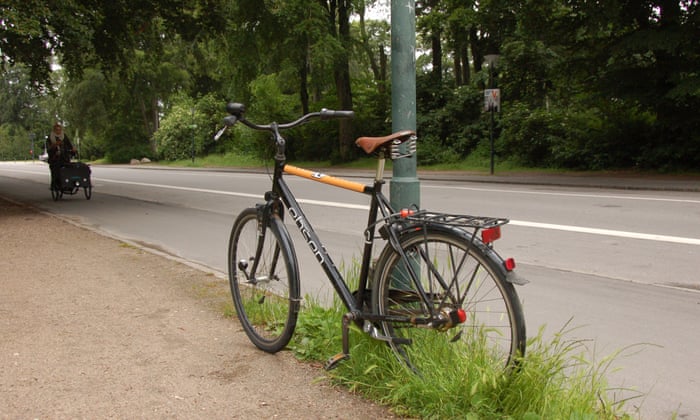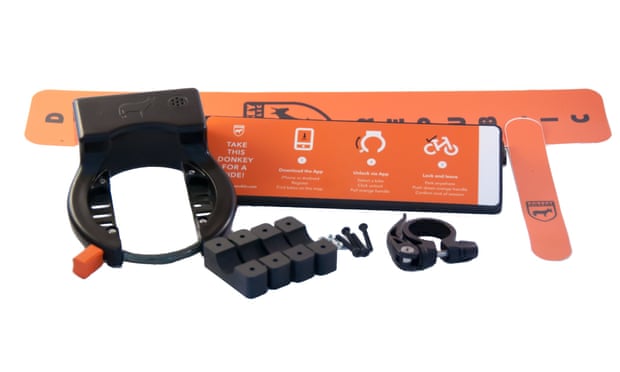Efforts to get people out of cars and onto bicycles are most commonly associated with European (and, to a lesser extent, North American) cities with relatively young and affluent populations. Most of them are places that have long been established as regional, national or worldwide centers of commerce, culture and technological innovation.
Those cities, with a few exceptions like Portland, are relatively compact: San Francisco, Montreal and New York are hemmed in by water, while European capitals are ringed by long-established, if smaller, municipalities. In other words, they can't expand, so if people move in, their population densities increase--and housing becomes scarcer and therefore more expensive. That, as much as anything, puts a damper on the growth in such cities' populations.
Most people don't immediately associate car-to-bike campaigns with rapidly-growing cities in developing, low- to middle-income countries. If anything, people want to parlay their newfound prosperity, or even flaunt it, with their new automobiles. That their shiny new machines may spend more time idling in traffic than moving to any particular destination seems not to deter them from getting behind the wheel rather than astride two wheels.
So it is in Bangaluru, known in the English-speaking world as Bangalore. It's often called "The Silicon Valley of India" for its concentration of high-tech firms, which have drawn migrants from the rest of India. As a result, it's been one of the world's fastest-growing cities and metropolitan areas in the world: The 2011 Census counted 8.4 million residents (about the same number as my hometown of New York) but current estimates say that there are between 10.5 and 12.3 million people living in the city where fewer than 3 million lived in 1981 and only 400,000 took up residence in 1941.
But Bangaluru, like other rapidly-growing cities in developing countries, has even more knotted and chaotic traffic than what one encounters in First World cities. As I've mentioned before, millions newly middle-class Bangalureans have taken to driving. The real problem, though, seems to be that the city's roads simply can't handle so much traffic. They are narrow, and many people won't cycle because they don't want to compete with motorized vehicles for space. Worse, they are jostling with cars and trucks on the roadway while dodging huge potholes: Before the boom, there wasn't money for maintenance, but now it's difficult, if not impossible, to keep up with needed repairs.
So, the city and its regional administration are working on a several-pronged plan that both takes its cues, and learns from the mistakes of, other schemes in the area's cities. In those places, bike lanes were built but people didn't use them because they weren't useful for getting to wherever they had to go or were simply seen as not much safer than riding on the streets. Also, Bangaluru planners have learned that city-owned bike share programs have had a number of problems and, as one report put it, while municipalities are good for providing the needed infrastructure, private companies are better at providing share bikes. A problem with those services, though, has surfaced in cities all over the world, especially in China: the bikes are left anywhere and everywhere when people are finished with them. So, a possible solution is to have a company like Yulu or Ofo provide the service, and for the city to build dedicated parking facilities--like lots for cars, only smaller--where people can leave, or pick up, bikes.
Could India's Silicon Valley also become its next Amsterdam?
Those cities, with a few exceptions like Portland, are relatively compact: San Francisco, Montreal and New York are hemmed in by water, while European capitals are ringed by long-established, if smaller, municipalities. In other words, they can't expand, so if people move in, their population densities increase--and housing becomes scarcer and therefore more expensive. That, as much as anything, puts a damper on the growth in such cities' populations.
Most people don't immediately associate car-to-bike campaigns with rapidly-growing cities in developing, low- to middle-income countries. If anything, people want to parlay their newfound prosperity, or even flaunt it, with their new automobiles. That their shiny new machines may spend more time idling in traffic than moving to any particular destination seems not to deter them from getting behind the wheel rather than astride two wheels.
So it is in Bangaluru, known in the English-speaking world as Bangalore. It's often called "The Silicon Valley of India" for its concentration of high-tech firms, which have drawn migrants from the rest of India. As a result, it's been one of the world's fastest-growing cities and metropolitan areas in the world: The 2011 Census counted 8.4 million residents (about the same number as my hometown of New York) but current estimates say that there are between 10.5 and 12.3 million people living in the city where fewer than 3 million lived in 1981 and only 400,000 took up residence in 1941.
But Bangaluru, like other rapidly-growing cities in developing countries, has even more knotted and chaotic traffic than what one encounters in First World cities. As I've mentioned before, millions newly middle-class Bangalureans have taken to driving. The real problem, though, seems to be that the city's roads simply can't handle so much traffic. They are narrow, and many people won't cycle because they don't want to compete with motorized vehicles for space. Worse, they are jostling with cars and trucks on the roadway while dodging huge potholes: Before the boom, there wasn't money for maintenance, but now it's difficult, if not impossible, to keep up with needed repairs.
 |
| The possible model for Bengaluru |
So, the city and its regional administration are working on a several-pronged plan that both takes its cues, and learns from the mistakes of, other schemes in the area's cities. In those places, bike lanes were built but people didn't use them because they weren't useful for getting to wherever they had to go or were simply seen as not much safer than riding on the streets. Also, Bangaluru planners have learned that city-owned bike share programs have had a number of problems and, as one report put it, while municipalities are good for providing the needed infrastructure, private companies are better at providing share bikes. A problem with those services, though, has surfaced in cities all over the world, especially in China: the bikes are left anywhere and everywhere when people are finished with them. So, a possible solution is to have a company like Yulu or Ofo provide the service, and for the city to build dedicated parking facilities--like lots for cars, only smaller--where people can leave, or pick up, bikes.
Could India's Silicon Valley also become its next Amsterdam?




